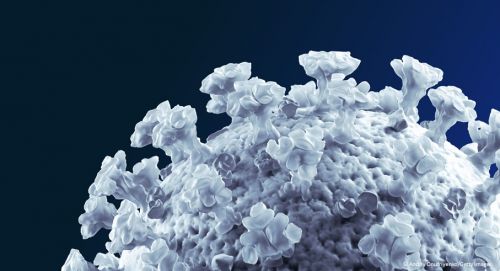
23/03/2020
ICN2 and CReSA at the forefront against COVID-19
ICN2 and CReSA at the forefront against COVID-19
If a first lesson can be already drawn from the COVID-19 epidemic we are facing, is that research is crucial to give both the scientific expertise governments need and solutions to cure or prevent the disease.
In that context, two research centers from the UAB Campus, our neighbor and partner, are on the front line of this great challenge: the Catalan Institute of Nanoscience and Nanotechnology (ICN2) and the Animal Health Research Center (CReSA).
Among the 17 research projects awarded this month by the European Commission after a special call to focus research efforts on the diagnosis and treatment of the COVID-19 disease caused by the SARS-CoV-2 coronavirus, one is led by the ICN2. This project called CONVAT aims at diagnosing the disease in 30 minutes directly from a patient's sample.
CONVAT is led and coordinated by Prof. Laura M. Lechuga, CSIC Research Professor at the ICN2. The device that will be developed is based on optical biosensor nanotechnology will also allow the analysis of different types of coronavirus present in reservoir animals, such as bats, to monitor the evolution of these viruses and prevent future infectious outbreaks in humans. The project has a duration of two years, however, since it is based on previous know-how, results are expected to be produced in less than a year.
Regarding the CReSA laboratory from the Institute for Agri-Food Technology and Research (IRTA), its coronavirus line of research has begun working with scientists at the National Laboratory of Galveston and the University of Texas Medical Center of the United States of America to find out more about the origin and evolution of the disease.
Just days after the Wuhan’s new coronavirus outbreak, the virus’s gene sequence was identified and published by various research centers around the world. With this information, CReSA researchers and their colleagues have identified the target protein and its specific region that would be key to work on a possible vaccine. The next step to this study already published is to check the effectiveness of these molecules in the lab to find out if they would be good candidates for a vaccine.
Congratulations and good luck!
In that context, two research centers from the UAB Campus, our neighbor and partner, are on the front line of this great challenge: the Catalan Institute of Nanoscience and Nanotechnology (ICN2) and the Animal Health Research Center (CReSA).
Among the 17 research projects awarded this month by the European Commission after a special call to focus research efforts on the diagnosis and treatment of the COVID-19 disease caused by the SARS-CoV-2 coronavirus, one is led by the ICN2. This project called CONVAT aims at diagnosing the disease in 30 minutes directly from a patient's sample.
CONVAT is led and coordinated by Prof. Laura M. Lechuga, CSIC Research Professor at the ICN2. The device that will be developed is based on optical biosensor nanotechnology will also allow the analysis of different types of coronavirus present in reservoir animals, such as bats, to monitor the evolution of these viruses and prevent future infectious outbreaks in humans. The project has a duration of two years, however, since it is based on previous know-how, results are expected to be produced in less than a year.
Regarding the CReSA laboratory from the Institute for Agri-Food Technology and Research (IRTA), its coronavirus line of research has begun working with scientists at the National Laboratory of Galveston and the University of Texas Medical Center of the United States of America to find out more about the origin and evolution of the disease.
Just days after the Wuhan’s new coronavirus outbreak, the virus’s gene sequence was identified and published by various research centers around the world. With this information, CReSA researchers and their colleagues have identified the target protein and its specific region that would be key to work on a possible vaccine. The next step to this study already published is to check the effectiveness of these molecules in the lab to find out if they would be good candidates for a vaccine.
Congratulations and good luck!
More news
02/06/2021
Parc de l’Alba in a WHO publication on the redevelopment of contaminated sites
27/04/2021
Natura Bissé: when architecture reflects the brand identity
08/04/2021
ASTIP, the future hub for advanced research in the Barcelona Synchrotron Park
25/03/2021
4th anniversary of the setting up of Stradivarius headquarter in the Barcelona Synchrotron Park
05/03/2021
T-Systems, a leading IT service provider with a Data Centre in the Barcelona Synchrotron Park
18/02/2021
SENER participates in the Perseverance rover which is landing on Mars today









